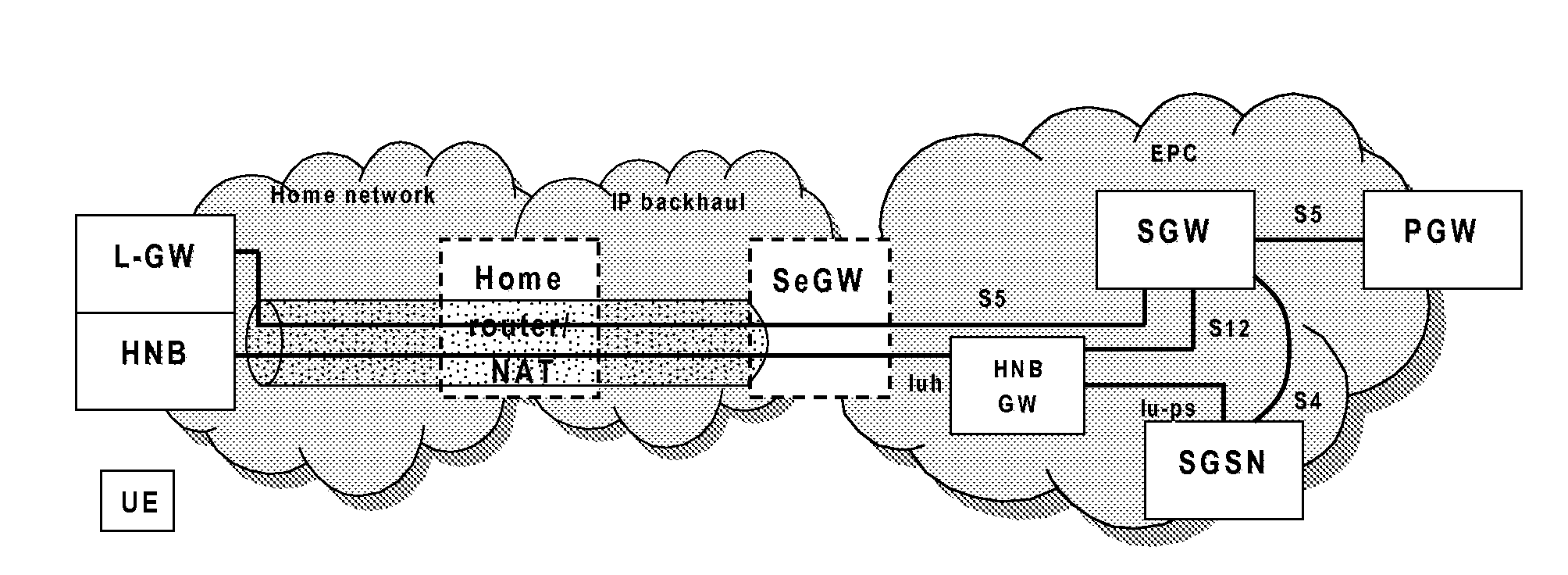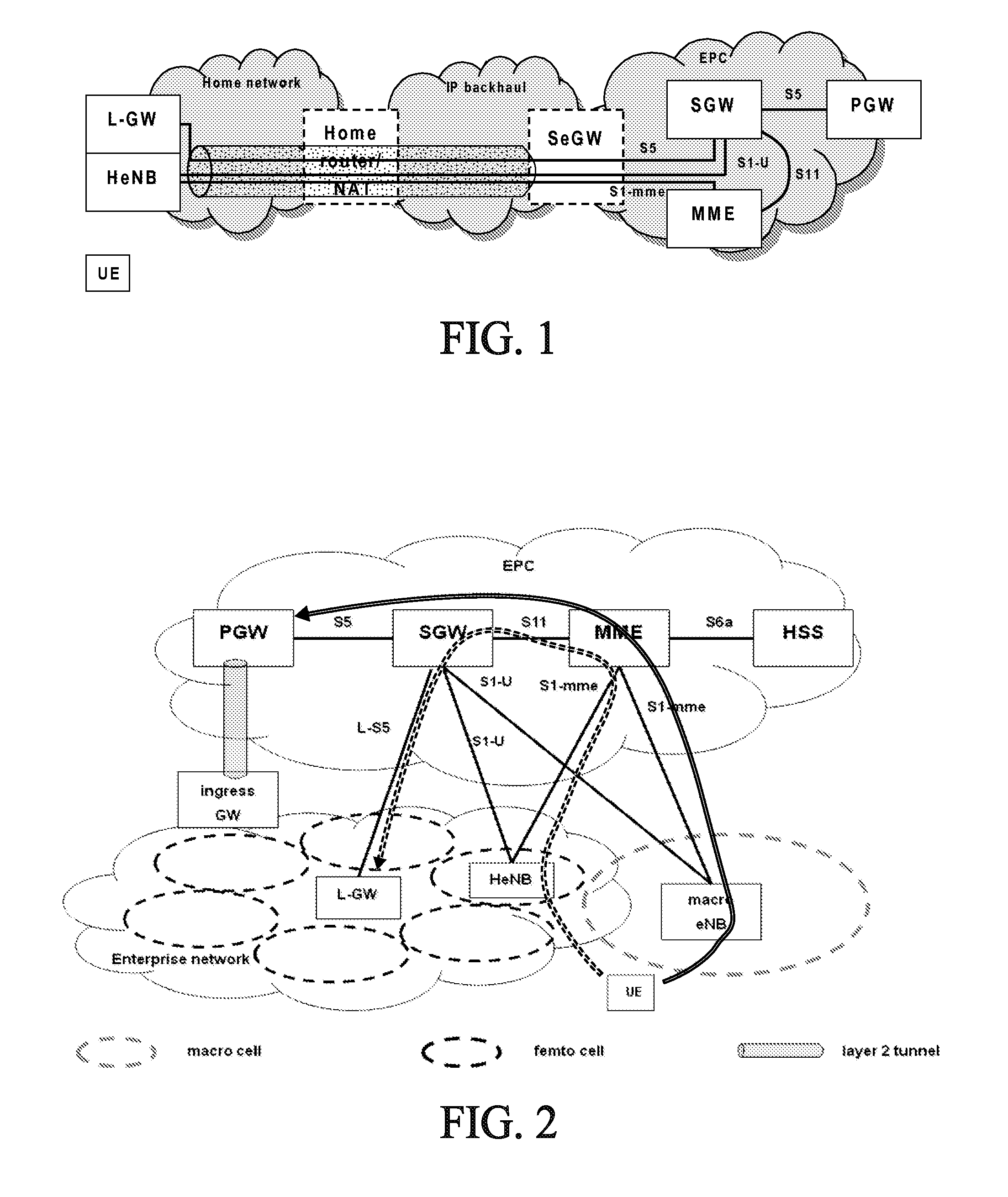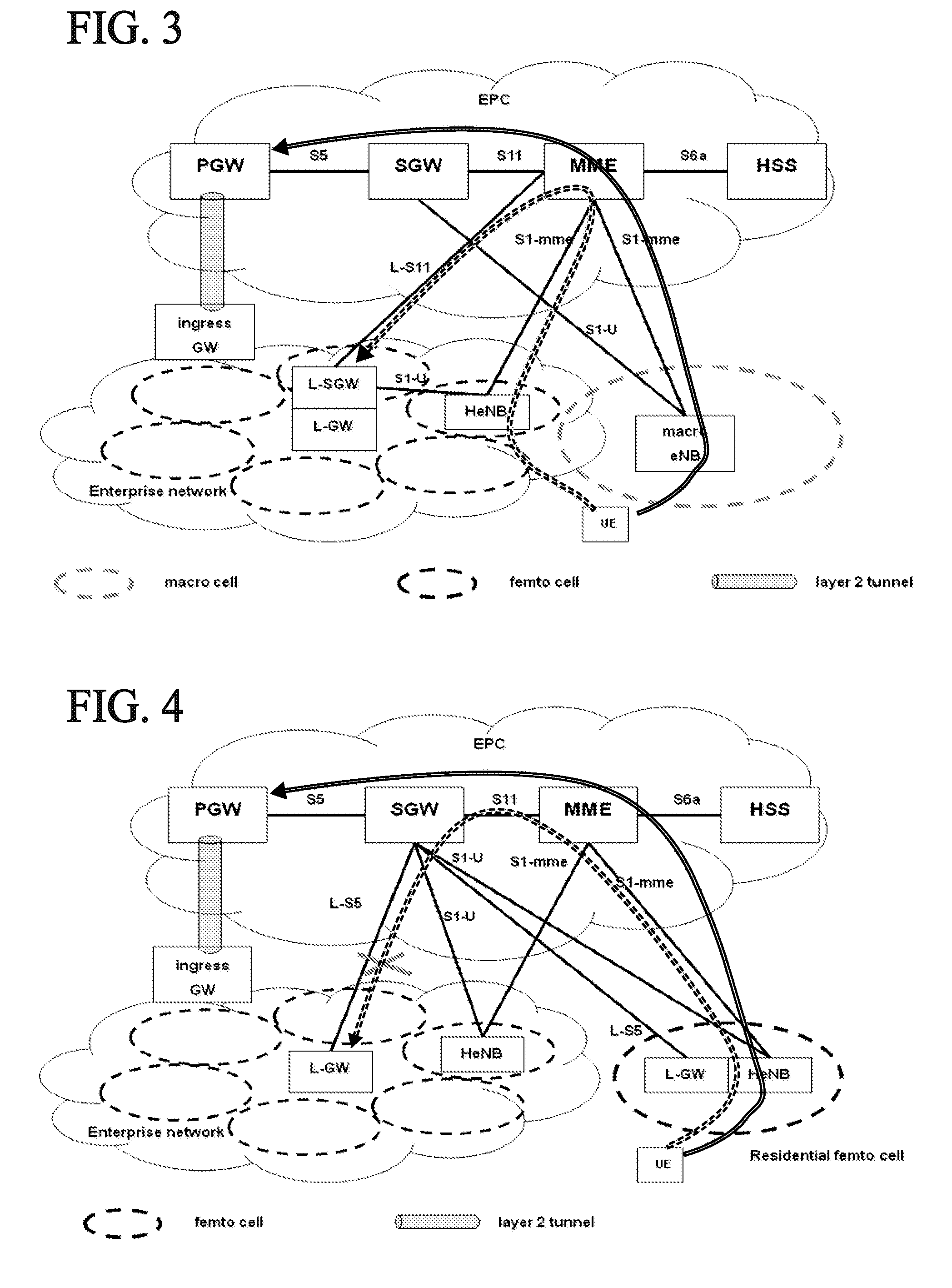[0036]According to a possible embodiment, the selection module of the home cellular base
station is set, upon reception of a downlink IP packet on the local interface along with a second correlation ID, to match the first correlation ID with the second correlation ID, in order to determine the radio bearer on which to transmit the downlink IP packet to the
user equipment through the
radio interface. The first correlation ID is typically received once for all during the establishment of the communication, while the second correlation ID is included in each packet, and enables the matching of correlation IDs in order to
route the packet properly. The packet is a downlink packet, i.e. a packet which destination is the
user equipment (as opposed to uplink packets which originate from the user equipment). There are potentially many radio bearers from the home cellular base
station to the user equipment. This embodiment enables the selection of the proper bearer. The embodiment is also advantageous because it does not require any complex function such as DL-TFT (downlink
traffic flow template) which is a kind of packet filter, thanks to the simple correlation ID. Such complex tasks (such as tasks requiring layer 3 capabilities, as opposed to conventional layer 2 capabilities of an HeNB) can remain, for example, in the PGW (L-GW in LIPA) and / or in the UE, for example.
[0038]According to a possible embodiment, the selection module of the home cellular base
station is set to check, upon reception of an uplink IP packet on a radio bearer of the
radio interface, the presence of the first correlation ID for said radio bearer. The uplink IP packet can then be transmitted through the local interface if the first correlation ID is present, and through the user plane interface if the first correlation ID is not present. In particular, in the LTE context, it is possible to implement this embodiment in the following manner. During bearer establishment, the MME can provide the user equipment with the packet filters for selecting the bearer, and can provide the HeNB with the correlation ID for the bearer that is being established. When the user equipment sends a packet (it is an uplink packet), it applies the packet filter in order to use the proper bearer. Then the packet is received at the home cellular base station, which maintains a
list of bearers and associated first correlation ID (if any). So the home cellular base station can check whether there is a correlation ID for that specific packet (depending on the specific bearer on which it was sent) or not. Accordingly, the home cellular base station can send the packet either to the local gateway or to the Serving GateWay. This embodiment is advantageous since it enables an improved routing of uplink packets.
[0041]The invention also relates to a control node (such as an MME in LTE context), comprising a PDN management module for checking whether a given packet data
network connection is established for local IP access, and upon positive check (i.e. if the connection which establishment is requested is supposed to be a LIPA connection), for sending a first correlation ID to a home cellular base station which is managing this packet data
network connection, wherein the first correlation ID is used for enabling a direct user plane path between the home cellular base station and a collocated local gateway providing access to a local IP network. Such control node is useful to improve the routing of data packets by shortening the path through which they have to travel (no more tromboning).
[0042]The invention also relates to a control node comprising an
authorization module arranged for receiving an
Access Point Name (APN) associated with the packet data
network connection and for checking this APN against a
list of authorized APNs for the closed subscriber group (CSG) associated with the home cellular base station. This is advantageous since it prevents a user who is authorized to access a given APN from a given CSG (e.g. corporate CSG) to access this APN from a CSG from which he is not authorized to access this APN (e.g. a personal CSG, at home). This is advantageous as it prevents undesired establishment of PDN connections, especially connection from a home user to his employer's
intranet via Local IP Access, while at home. Such attempts will simply fail because Local IP Access to the employer's
intranet is possible only when the user is located inside the corporate CSG.
[0045]The invention also relates to a
direct path enablement method comprising a step of obtaining, in a home cellular base station, a first correlation ID for enabling a direct user plane path between the home cellular base station and a local gateway providing access to a local IP network. The first correlation ID is obtained via a control plane interface (such as S1-MME in LTE) of the home cellular base station upon each establishment of a bearer providing access to the local IP network. This improves the routing of data packets.
 Login to View More
Login to View More  Login to View More
Login to View More 


